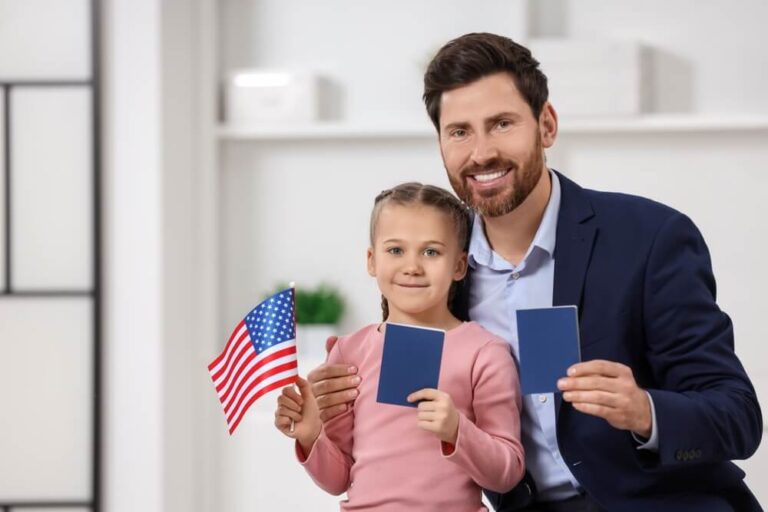Bringing your loved ones to the United States is one of the most meaningful things you can do, and the U.S. immigration system allows it through family-based immigration sponsorship. But even though it’s a common pathway to permanent residency, the process involves strict rules, eligibility requirements, and long wait times that vary based on the relationship and country of origin.
Suppose you’re living in Virginia and want to sponsor a family member for immigration. In that case, this guide will walk you through exactly how it works, who qualifies, what forms you need, and how a qualified family-based immigration attorney can help you avoid delays or denials.
What Is Family-Based Immigration?
Family-based immigration allows U.S. citizens and lawful permanent residents (green card holders) to sponsor certain relatives for a green card (lawful permanent residency). It’s one of the most common and structured immigration processes in the U.S.
The system is divided into two categories:
- Immediate relatives (no annual limit)
- Family preference categories (limited number of visas issued each year)
Who Can You Sponsor for Immigration?
If you’re a U.S. Citizen:
You can sponsor:
- Your spouse
- Your unmarried children under 21
- Your parents (if you’re at least 21)
- Your married children
- Your siblings (if you’re at least 21)
If you’re a Green Card Holder:
You can sponsor:
- Your spouse
- Your unmarried children (under or over 21)
You cannot sponsor parents, siblings, or married children unless you become a U.S. citizen.
Step-by-Step: How to Sponsor a Family Member in Virginia
1. Determine Eligibility and Relationship
The first step is confirming whether your relationship qualifies under immigration law. Immediate relatives (spouses, parents, minor children of U.S. citizens) have no visa cap, meaning there’s no waiting for a visa number.
For all other relatives, you’ll need to monitor the Visa Bulletin monthly to track wait times based on the “priority date.”
2. File Form I-130 (Petition for Alien Relative)
You must submit Form I-130 to U.S. Citizenship and Immigration Services (USCIS). This petition establishes:
- The validity of your relationship
- Your immigration status as a sponsor
- Your intent to support your relative
Supporting documents typically include:
- Birth or marriage certificates
- Proof of U.S. citizenship or green card status
- Evidence of bona fide relationships (especially in marriage cases)
3. Wait for USCIS Processing & Priority Date to Become Current
Once your I-130 is filed, USCIS will issue a receipt and, eventually, an approval notice. If your petition falls under a preference category, you must wait for a visa number to become available.
You can monitor this using the Department of State’s Visa Bulletin.
4. Begin the Green Card Application (Either I-485 or Consular Processing)
Once the visa is available:
- If your relative is in the U.S., they may file Form I-485 (Adjustment of Status).
- If they are outside the U.S., they will go through consular processing in their home country.
5. Complete the Medical Exam and Attend the Interview
Green card applicants must:
- Undergo a medical exam by an authorized physician
- Attend an interview with USCIS or at a U.S. embassy or consulate
- Provide fingerprints and biometric data
The goal of the interview is to verify the relationship, check eligibility, and ensure no grounds for inadmissibility exist.
How Long Does It Take?
Processing times vary based on the type of relationship and where your relative is applying from.
- Spouse of U.S. citizen: 12–18 months on average
- Parent of U.S. citizen: 10–15 months
- Sibling of U.S. citizen: 10+ years (due to annual limits)
- Spouse/child of green card holder: 18–36 months
Timelines can change based on visa backlogs, USCIS workload, and global events.
Common Mistakes to Avoid
Even small errors can lead to delays or denials. Common issues include:
- Incomplete forms or missing documents
- Inconsistencies in relationship evidence
- Forgetting to submit the Affidavit of Support (Form I-864)
- Incorrect filing fees or outdated forms
- Not monitoring the Visa Bulletin for updates
How an Immigration Attorney in Virginia Can Help
An experienced immigration attorney ensures your case is handled with care, accuracy, and speed. Here’s how we help:
- Determine eligibility and best filing strategy
- Prepare and submit I-130 and supporting evidence
- Respond to USCIS requests or Notices of Intent to Deny (NOIDs)
- Guide you through consular interviews or adjustment of status
- Avoid mistakes that cost time and money
We also monitor Virginia-specific trends, such as local USCIS office backlogs, which can affect interview wait times.
Final Thoughts
Sponsoring a family member for immigration is a generous and life-changing act—but it’s not simple. Whether you’re helping a spouse, parent, or child come to the U.S., understanding the process and having the right legal support make all the difference.
If you’re in Virginia and ready to reunite with family, ensure your case is strong from day one. A thoughtful, well-prepared petition is the key to faster approval and a smoother journey.
FAQs: Family Sponsorship in Virginia
Q: Can I sponsor my fiancé(e)?
Not through a green card. You must use a K-1 fiancé(e) visa, which has a separate process.
Q: Can I sponsor more than one relative at a time?
Yes, if you’re eligible to sponsor them. Each relative needs a separate I-130 petition.
Q: Will my income be checked?
Yes. You must meet the minimum income requirements and submit Form I-864 to prove you can financially support the immigrant.
Q: Can my relative work while waiting for a green card? Only if they receive a work permit (EAD) through a pending I-485 application.

